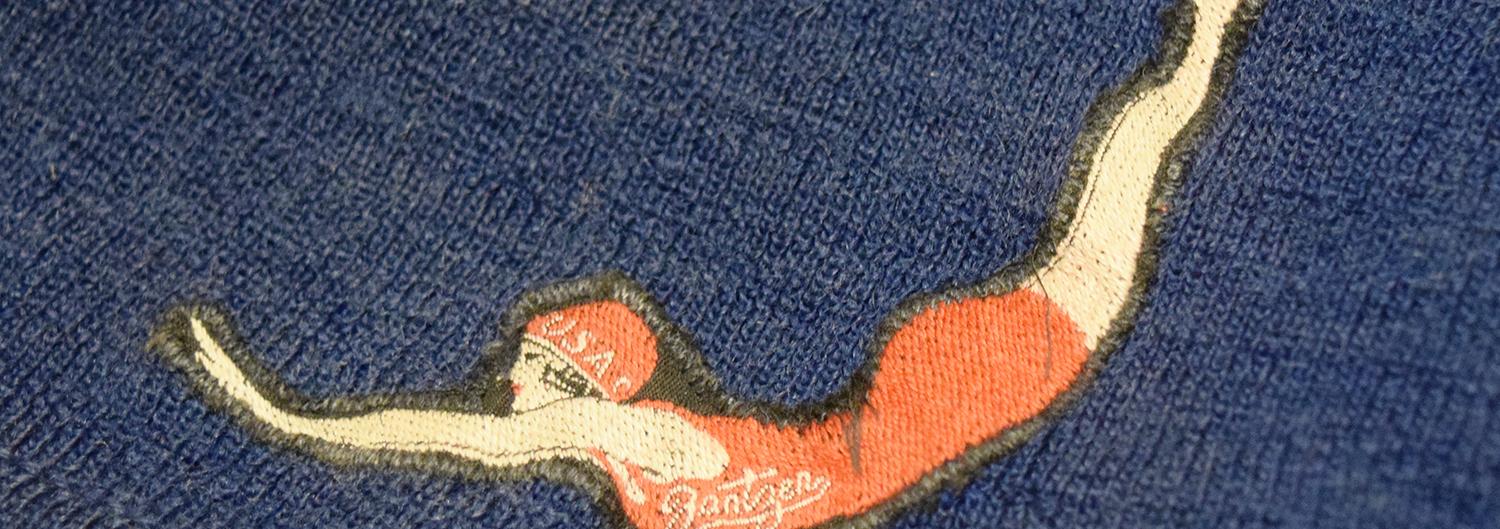
by Alyssa Constad, Curatorial Intern
Take a closer look at the history of the bathing suit, from bloomer to bikinis, with some help from the SC State Museum's collection.
In the mid eighteenth-century visits to the sea became a common leisure and vacation activity in American culture. New railroads traversed the country and helped to popularize the concept of vacation as they transported eager tourists to their favorite summer spots. Yet it was still indecent for men and women to swim together in public.
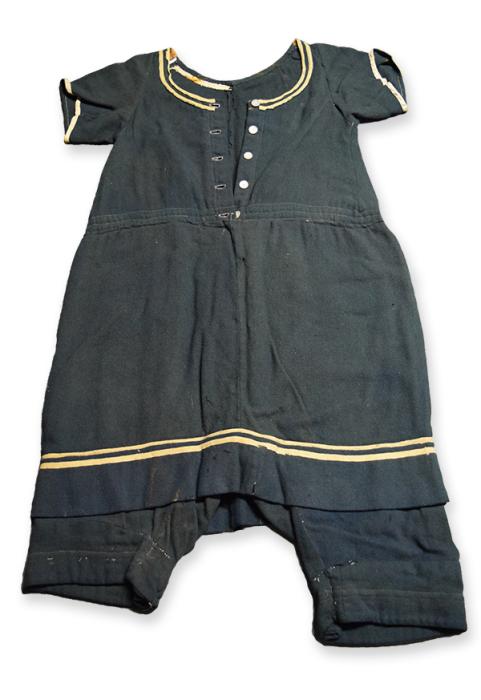
This hand-made bathing suit would have been worn with stockings and garters. From the SC State Museum Collection.
To ensure privacy, beaches of the time featured rolling bathing machines: small changing rooms which would be dragged into the sea with female bathers inside. Women would also be covered in head-to-toe wool suits, stockings, and shoes, making beach bathing seem more like a burden then a leisure activity.
By the early 1900s men and women swimming together became acceptable and bathing suit fashions began to loosen up; a little. Gone were full-body suits - but women’s bathing costumes were still far from skimpy.
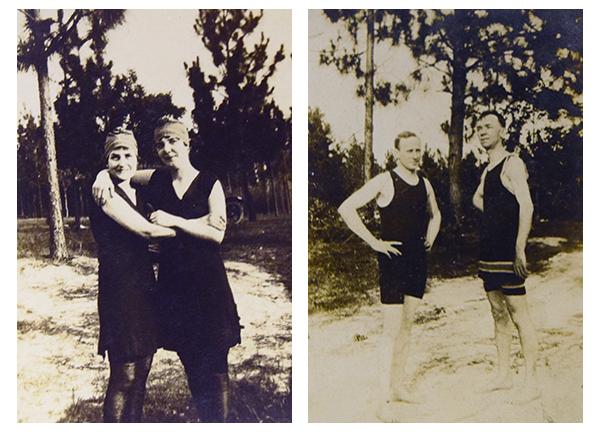
Bathers enjoying a dip circa 1920. Note that the ladies' bathing costumes include stockings. Images from the SC State Museum Collection.
An 1895 newspaper article published by The State proclaimed “the ideal bathing suit” for swimming was one which would not weigh the swimmer down with extra clothing. This sort of bathing suit was comprised of a “blouse and trousers in one piece and a short skirt which is fastened to the waistband.”
By the 1920’s women’s bathing suits begin to offer their owners slightly more freedom, and suits shrank along with the diminishing hemlines of popular fashion. Men's and women's bathing suits of this period are often indistinguishable since the style was a slim, athletic look for both sexes. Women would have the length of their suits measured while men did not.
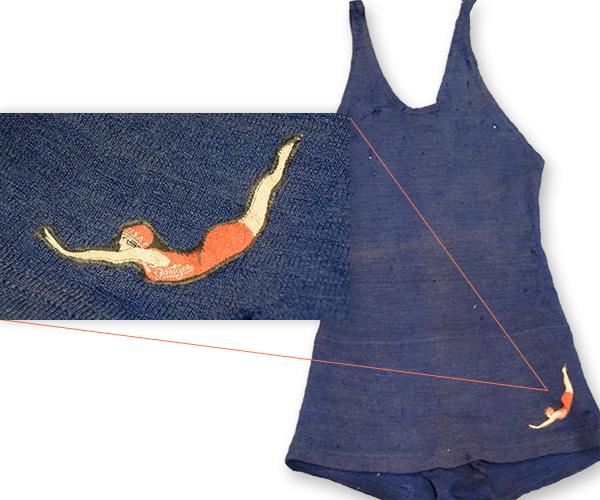
Circa 1920 Jantzen men's wool bathing suit that belonged to Joseph P. Cain. From the SC State Museum Collection.
In 1921 Jantzen Knitting Mills began producing wool suits with elastic, creating a more streamlined silhouette. . Along with formfitting costumes, Jantzen began printing a signature logo on their suits, depicting a scantily clad diving woman in a bright red suit, perfectly embodying the free spirited Roaring Twenties in a single logo.
Although the length of women’s suits may have shrunk over the following twenty years, they remained primarily made of wool and in the popular one piece style. One Columbia journalist even guessed that “maybe, like the human race, the one-piece bathing suit is a finished product!”
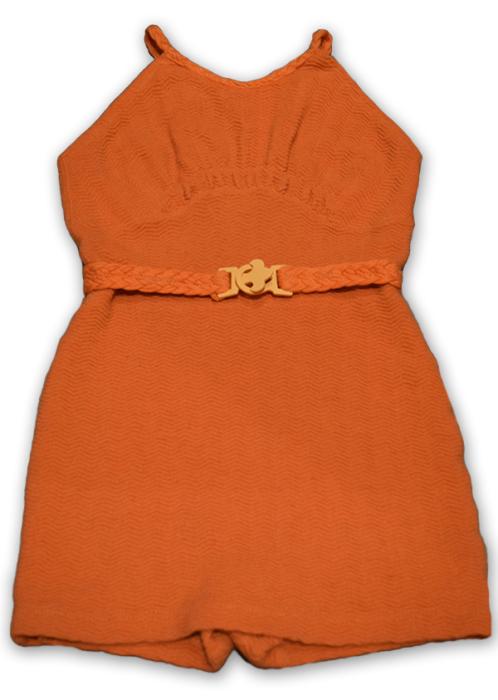
The shortened hem line, belt and form fitting material of this 1940’s swim suit left little to the imagination. From the SC State Museum Collection.
Despite the journalist’s best guess, in 1946 French fashion designer Louis Reard designed the bikini; a suit so scandalous that some models refused to pose in it. However, it would still be a few years before the modern bikini hit the shores of Myrtle Beach or Pawley’s Island.
During World War II the government aided the trend by requiring 10 percent less fabric in bathing suits in order to conserve materials. This fostered smaller styles and created some scandalous cut-out swimsuits. One concerned elderly Columbia citizen even wrote into The State that she was “so disgusted with what I see in the way of bathing suits that I can no longer stand going to the shore.”
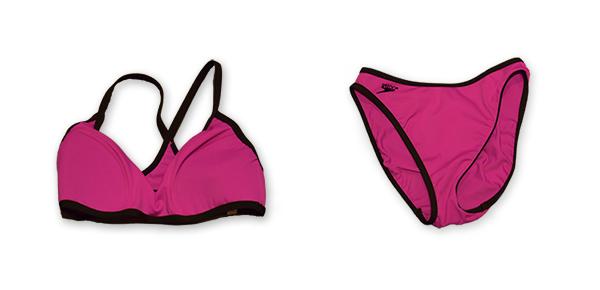
1998 Sports Speedo. The high-cut fashion in swimsuits was prompted by the hugely popular television show Baywatch. From the SC State Museum Collection.
By the 1950’s bikinis had become glamorized by Hollywood fashions, and took their place at the heart of beach attire. While styles and fabrics have changed over the past sixty years, the bikini has remained a staple of the American swim suit wardrobe.
It’s safe to say swim suit preferences are as varied and unique as their owners themselves, but this season we can all agree to be thankful that the days of wool bathing dresses and swimming stockings are a distant summer memory.
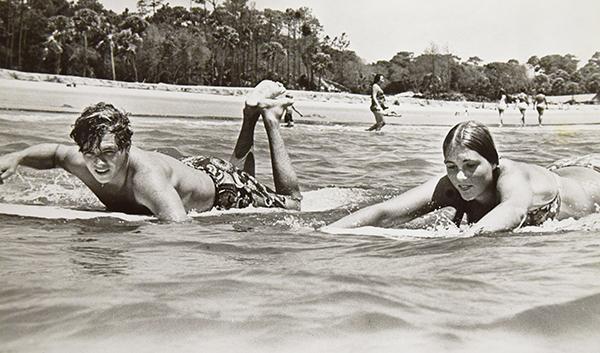
Surfers at Hunters Island SC, 1972. Image from the SC State Museum Collection.









